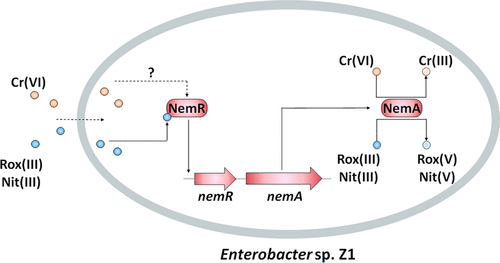Using high-throughput multiple optical phenotyping to decipher the genetic architecture of maize drought tolerance
Author: Kaixiang Shi,Manohar Radhakrishnan, Xingli Dai,Barry P. Rosenand Gejiao Wang
Genome Biology. 24 June 2021. 185(2021)
Abstract: Synthetic aromatic arsenicals such as roxarsone (Rox(V)) and nitarsone (Nit(V)) have been used as animal growth enhancers and herbicides. Microbes contribute to redox cycling between the relatively less toxic pentavalent and highly toxic trivalent arsenicals. In this study, we report the identification of nemRA operon from Enterobacter sp. Z1 and show that it is involved in trivalent organoarsenical oxidation. Expression of nemA is induced by chromate (Cr(VI)), Rox(III), and Nit(III). Heterologous expression of NemA in Escherichia coli confers resistance to Cr(VI), methylarsenite (MAs(III)), Rox(III), and Nit(III). Purified NemA catalyzes simultaneous Cr(VI) reduction and MAs(III)/Rox(III)/Nit(III) oxidation, and oxidation was enhanced in the presence of Cr(VI). The results of electrophoretic mobility shift assays and fluorescence assays demonstrate that the transcriptional repressor, NemR, binds to either Rox(III) or Nit(III). NemR has three conserved cysteine residues, Cys21, Cys106, and Cys116. Mutation of any of the three resulted in loss of response to Rox(III)/Nit(III), indicating that they form an Rox(III)/Nit(III) binding site. These results show that NemA is a novel trivalent organoarsenical oxidase that is regulated by the trivalent organoarsenical-selective repressor NemR. This discovery expands our knowledge of the molecular mechanisms of organoarsenical oxidation and provides a basis for studying the redox coupling of environmental toxic compounds.
Full Aticle:https://doi.org/10.1021/acs.est.1c00574
